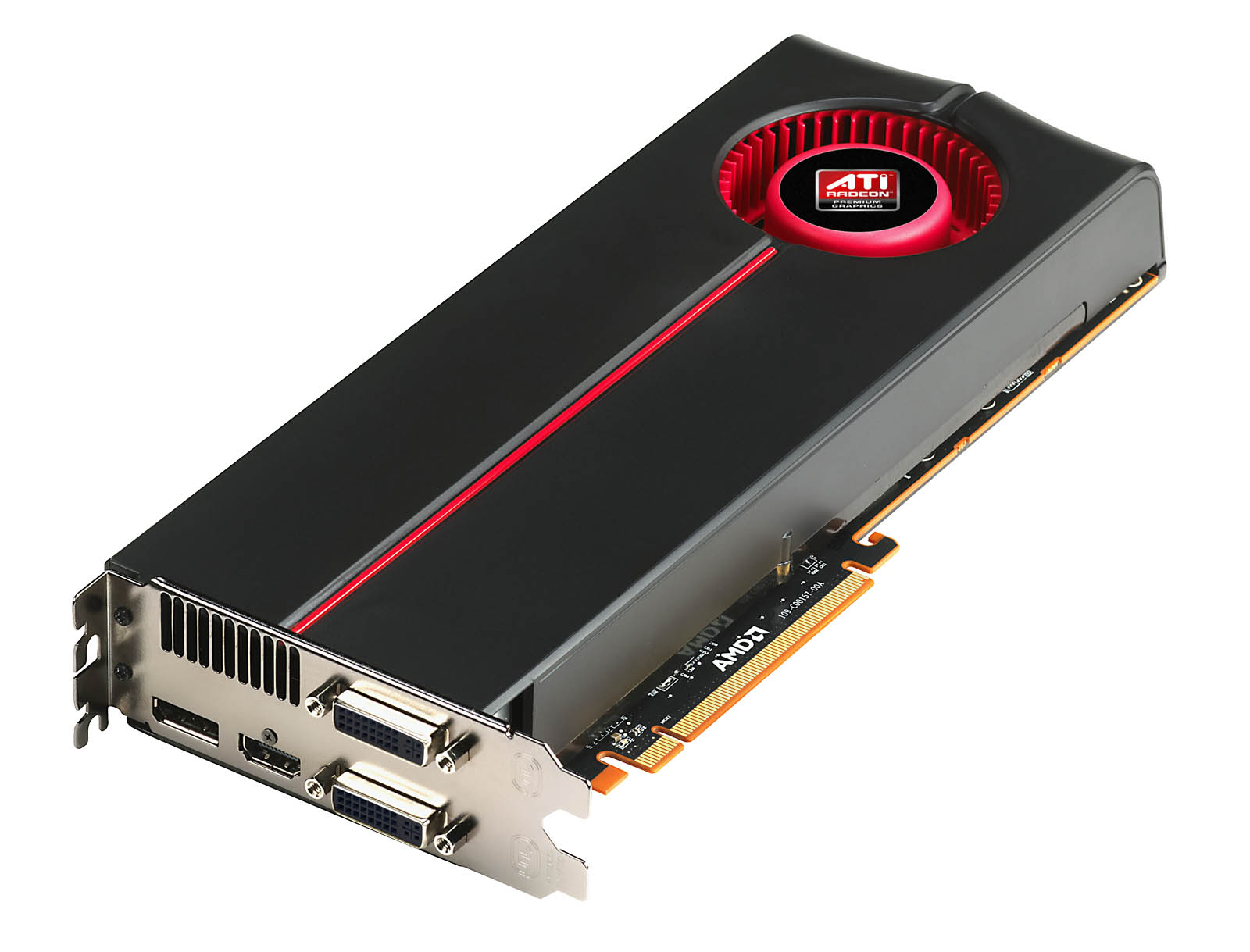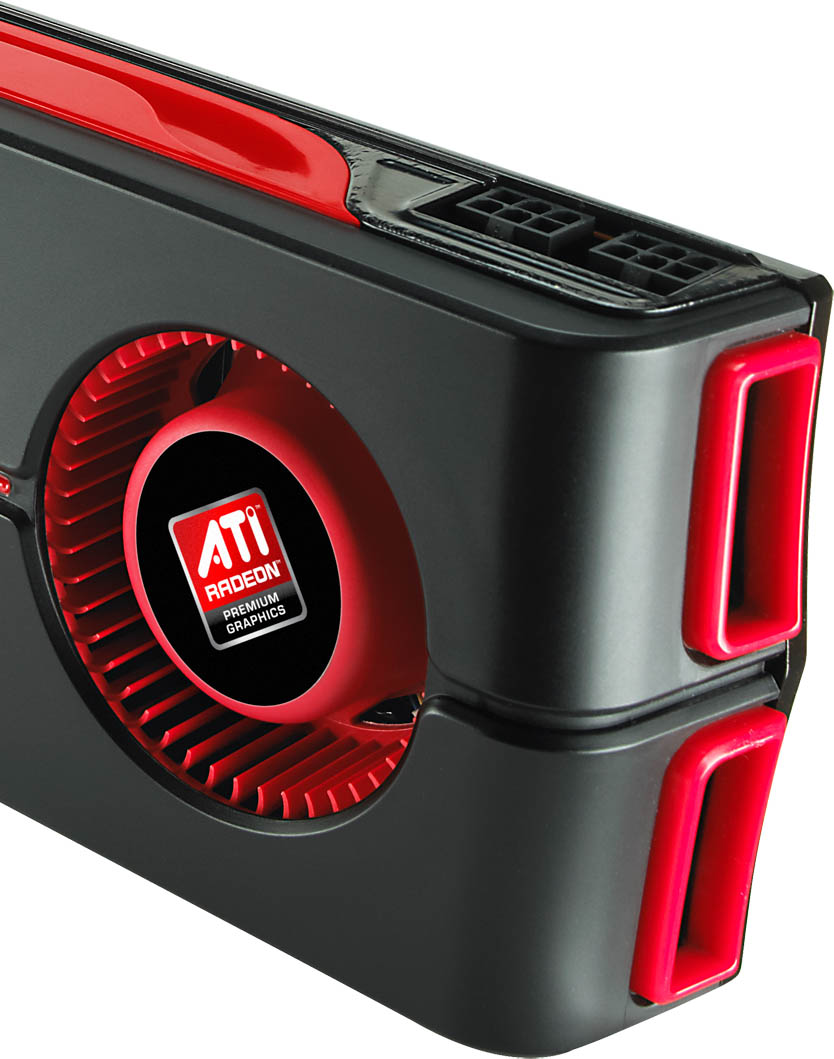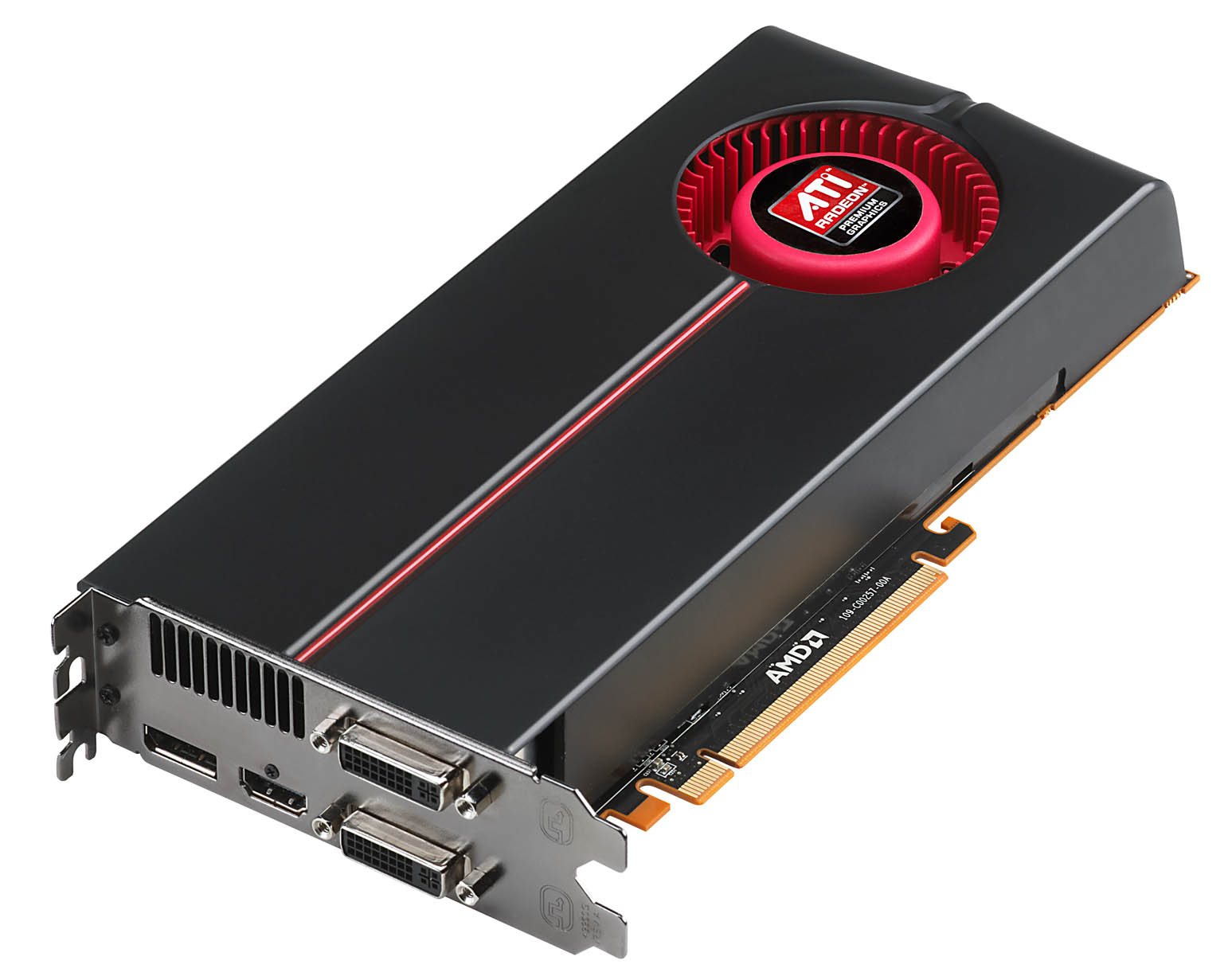ATI Radeon HD 5870: DirectX 11, Eyefinity, And Serious Speed
Cypress Becomes The Radeon HD 5800-Series
ATI is announcing two graphics cards today, the Radeon HD 5870 and the Radeon HD 5850.
For the time being, the 5870 will be ATI’s flagship offering. Armed with the Cypress graphics processor and its full 1600 ALUs intact and running at 850 MHz, the board is capable of up to 2.72 TFLOPS of compute performance. This is The Full Monty, with 80 texture units, what ATI refers to as 32 ROPs, and 1GB of GDDR5 memory clocked at 1,200 MHz. With a 4.8 Gb/s data rate, that’s 153.6 GB/s of throughput. you'll notice that this isn't a huge increase from the Radeon HD 4890. ATI claims that when the 4890 was bottlenecked, it was held back by compute performance rather than memory bandwidth. The 5870 is purportedly a better-balanced board as a result.
ATI rates the Radeon HD 5870 at 27W idle and 188W active. Compare that to the Radeon HD 4890, which sucked down 90W idle and up to 160W while active. We’ll get into just how the company cuts power consumption so drastically in just a moment, though.
The Radeon HD 5870 is a large card—longer than ATI’s already-gargantuan 4870 X2 at 11” (versus 10.5”), and just as wide, filling two expansion slots. It’s covered front and back with a black plastic shroud. The red piping and intake-looking ports on the back are purely cosmetic, as the only way to get air into the blower-type cooler is on the side of the board. This presents a challenge when it comes to cooling the first card in a CrossFire configuration without three slots between boards, and indeed led us to hit 100 degrees Celsius under load, throttling the cards.
Exhausting air isn’t much easier as a result of the 5870’s populous I/O panel. As you already know, most dual-slot boards sport a number of display outputs across one of the slots, while a vent generally spans the length of the other. Here, however, you have one DisplayPort, one HDMI, and one dual-link DVI output across one slot and a second dual-link DVI connector covering half of the second. As a result, you get just over an inch and a half of ventilation for hot air. That’s not enough, so ATI also allows air to exhaust out the top of the board, into your chassis. Next to that top-vent is a pair of CrossFire connectors, used to sling as many as four cards together.
The second card, the Radeon HD 5850, sports a 725 MHz Cypress processor with two of its SIMD arrays disabled, yielding 1,440 ALUs (18 arrays times 16 stream processors times 5 ALUs). Because the texture units are tied to the SIMD cores, the 5850 loses eight of those as well, taking the total to 72. All of the GPUs render back-ends remain in place though, so the pixel fillrate and Z/stencil rates are affected only by the lower clock rate. Also armed with 1GB of GDDR5 memory, the Radeon HD 5850’s frame buffer runs at 1 GHz, yielding a 4 Gb/s data rate and 128 GB/s total bandwidth.
The same optimizations help keep power consumption down to 27W at idle, and lower 3D clocks bring the maximum board power down to 170W.
Get Tom's Hardware's best news and in-depth reviews, straight to your inbox.
If the scale of product photography is to be believed, the 5850 will be a shorter board, through still a dual-slot part. Unfortunately the 5850s weren’t ready for launch, but we’ll have a review posted as soon as the cards arrive. Keep an eye on this one—with a retail price of $259 and performance also claimed to be faster of the GeForce GTX 285, Nvidia might have some serious catching-up to do.
Current page: Cypress Becomes The Radeon HD 5800-Series
Prev Page Stepping Through The Architecture Next Page DirectX 11: More Notable Than DirectX 10?-
crosko42 So it looks like 1 is enough for me.. Dont plan on getting a 30 inch monitor any time soon.Reply -
jezza333 Looks like the NDA lifted at 11:00PM, as there's a load of reviews now just out. Once again it shows that AMD can produce a seriously killer card...Reply
Crysis 2 on an x2 of this is exactly what I'm waiting for. -
LORD_ORION Err... I thought I was going to see more for the price. Regardless, I think ATI missed the mark here. I am interested in playing games on my HDTV since me and my monitor don't care about these higher resolutions. Fail cakes... Nivida is undoubtedly going to rape ATI in performance with the 300 series. This is good news for mainstream prices however.... you can ptobably upgrade to a current DX10 board soon for a very good price, and then buy a 5850 for $100 in a year from now. Result? Don't but a 5000 series card yet until the price comes down? Heh, I bet the cards will be $100 less in December if the 300 series launches.Reply
This is not to say I am an Nvidia fan, just undoubtedly you would do well for yourself to hold off for a bit if you want to buy a 5000 series... as the price will come down for a good price/performance ratio soon enough. -
cangelini viper666why didn't they thest it against a GTX 295 rather than 280??? its far superior...Reply
Ran it against a GTX 295 and a 285 and 285s in SLI :) -
Annisman I refuse to buy until the 2GB versions come out, not to mention newegg letting you buy more than 1 at a time, paper launch ftl.Reply



